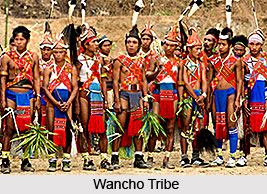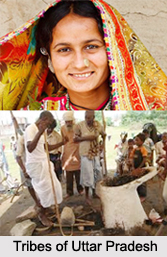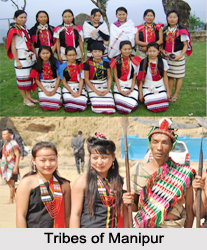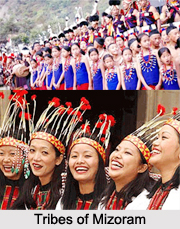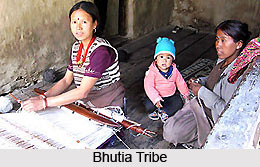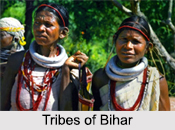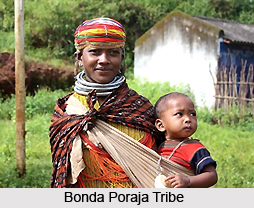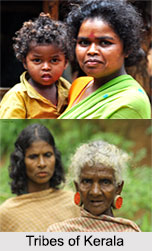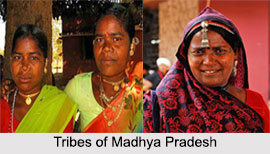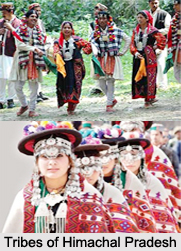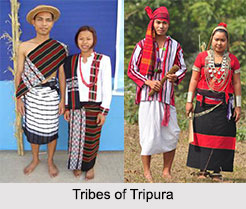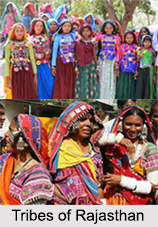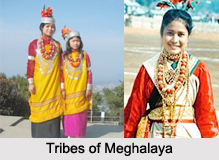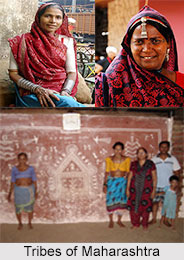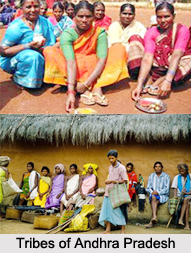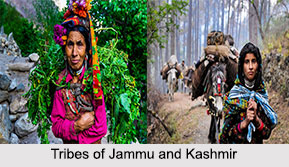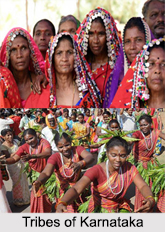Types of Wall decoration include the naturalistic as well as the symbolic. Wherever wall decoration is used representational art merges by easy stages into an abstract pattern or symbolism. The combination of forms and contents gives representative art an emotional value and a purely formal aesthetic effect. Wall decoration differs according to regions and beliefs.
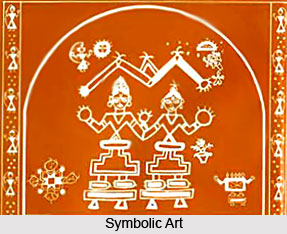 Symbolic Art
Symbolic Art
The human beings are portrayed symbolically with two legs and two hands with a circular face. Hands are raised either horizontally or upwards. Fingers are shown with three to five small lines. Tribals make animals and birds like lion, deer, rabbit, elephant, peacock and kite. Among other animals cow and bull are also drawn. Drawing rabbit and deer in clay depicts a feeling of safety because these animals can hide themselves on seeing strangers; similarly these tribes can hide themselves in the jungle. The depiction of lion for them is the establishment of True God. Mouth and tail are shown at both the ends of the upper corners of a rectangular body. Eyes are avoided. At some places birds are shown flying or sitting upon a log or a tree. Snake is commonly drawn on both the sides of the door and pillars. It is done for the safety from snakes.
There are scenes of tree with leaves, flowers and birds upon it. There are a large number of forms which are symbolic representations of sun, moon, clan gods, magic, electricity and prosperity. The decoration of doors, window brackets, niches and pillars are common in remote areas. Tribals also make some mythological and superstitious forms on their walls. The tribals have a feeling in their mind that by making such symbols their homes will remain safe from the lightning.
The depiction of serpent on the walls is the depiction of earth and Goddess Laxmi in addition to get the safety from the snake. Some tribes consider sun and earth as their gods and goddesses. Sun and moon both are shown with the mark of lightning.
Representational Art
The representational characteristic was popular in the depiction of animals, nature and human being. Depiction of gods and goddesses were fully naturalistic in some places.
Most of the walls are covered with the images of Lord Shiva, Lord Ram, Lord Vishnu, Lord Hanuman and Lord Krishna along with trees, animals and birds. The work of clay and mud is also done on the walls. Works of moist clay is also found human forms are drawn out of it on the wall. While it dries different colours are applied on the forms and paint it. Relief painting has gained popularity. Ornamentation of these forms is decorative. In some villages a wall decoration in which the forms are enhanced and coloured with Gairu on white background has also been found.
